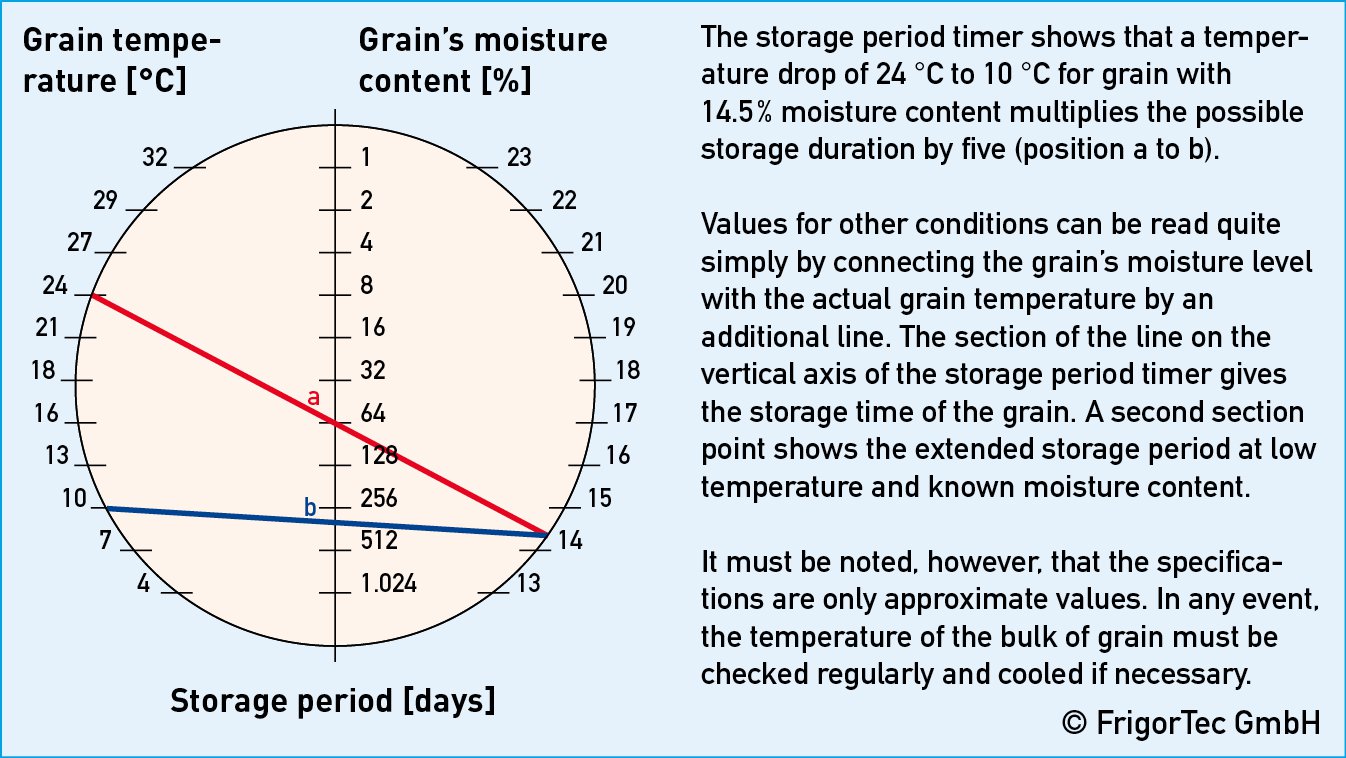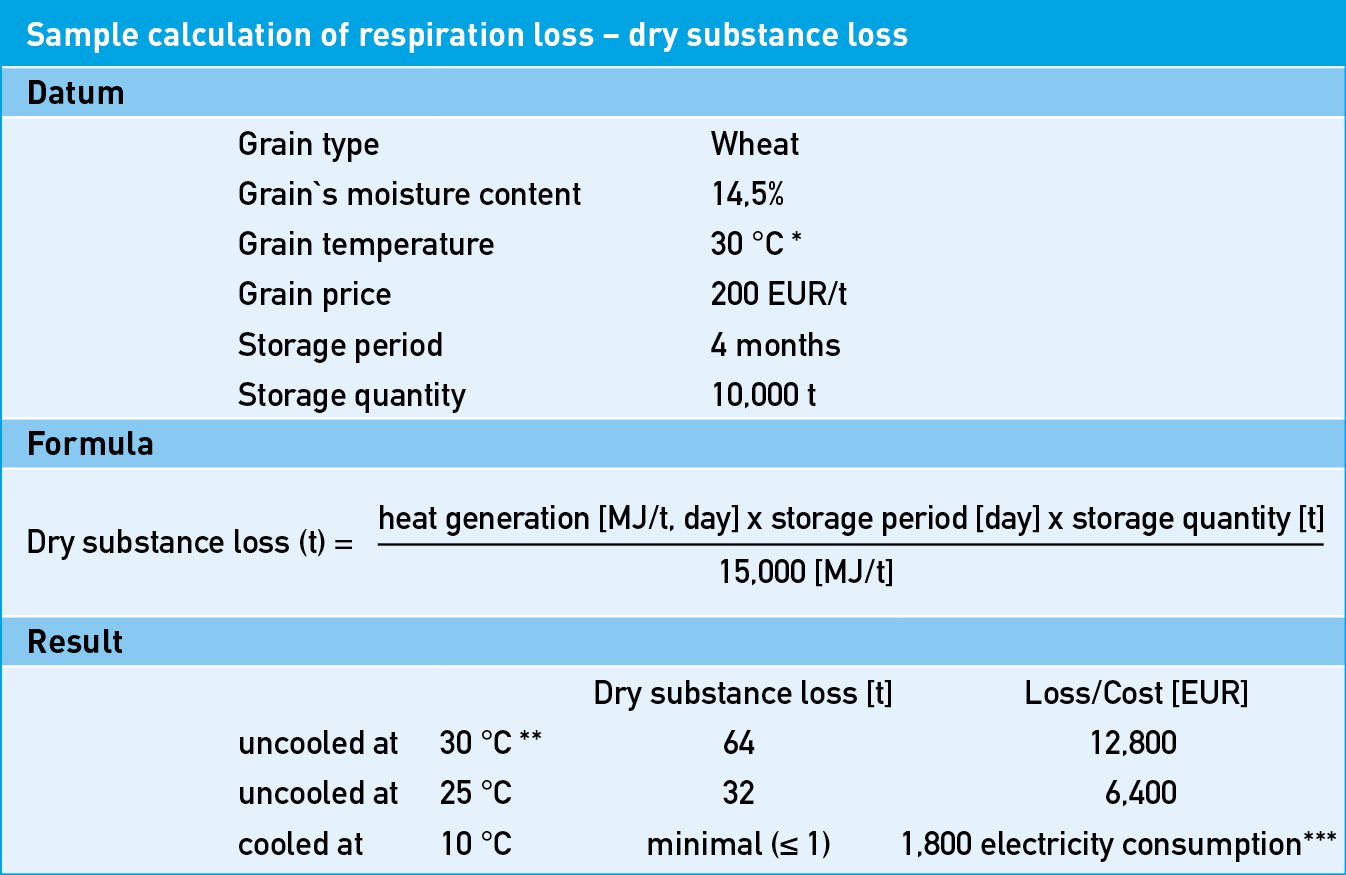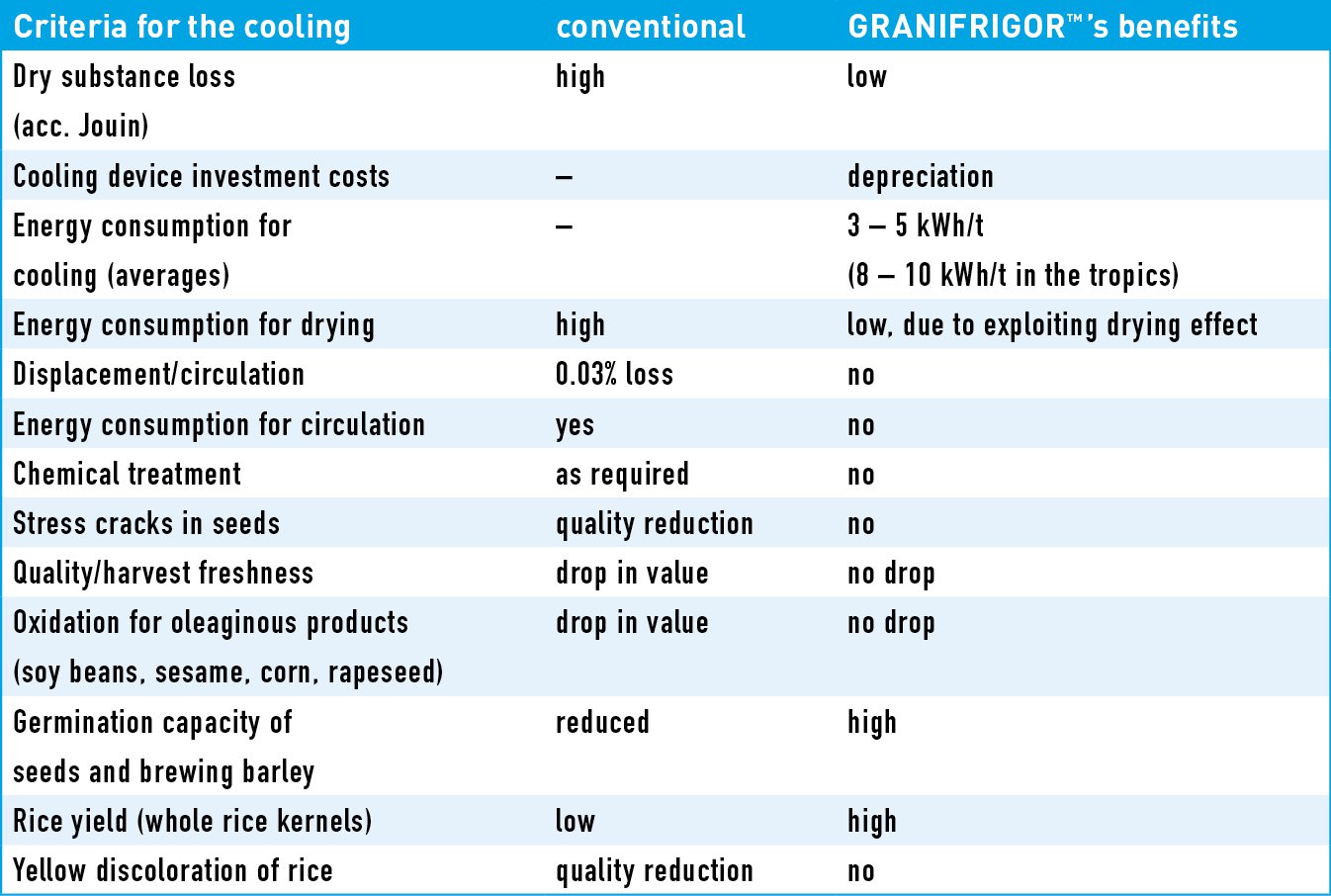Economical introduction and operation of grain cooling
Cooling preservation prevents loss of mass through cellular respiration, damage from insect activity and the development of secondary fungi (storage fungi) and the resulting mycotoxins.
Increased economic efficiency through preservation of the stored goods
The extent to which grain cooling protects the grain also depends on the type of grain. In any case, cooling preservation prevents loss of mass through cellular respiration, damage from insect activity and contamination with mould and the resulting mycotoxins. In the case of oilseeds, the oxidation process is additionally prevented, while in the case of seed and brewing cereals, the germination capacity is retained. In addition to protecting the grain quality, effective grain cooling pays off above all by extending the storage time. For example, lowering the grain temperature from 24 °C to 10 °C at a humidity of 14.5% increases the maximum safe storage period by a factor of 5.

Storage period timer for grain
Lower costs for drying, transfer in stores and chemical treatments
Grain cooling eliminates the need to redistribute the grain in stores. This avoids costs due to abrasion losses and the energy requirements of the conveyor systems. In addition, no free silo cells have to be kept available. Subsequent drying of the grains is less energy-intensive due to the drying effect of the previous grain cooling. The gentler dehumidification also leads to fewer stress cracks. If grain cooling replaces chemical treatment, there is no need for chemical substances and storage protection measures.
Cost efficiency depends on choosing the right grain cooling device
It is essential for the most economical grain cooling to match the cooling solution to the application. Which crops should be cooled under which conditions? Is the crop already ventilated before cooling? Grain coolers of an unsuitable performance class cannot adequately regulate the temperature and humidity in the bulk grain, consume energy disproportionately or incur unnecessarily high acquisition costs. Consultation with FrigorTec at an early stage guarantees the selection of a suitable grain cooling device that economically fulfils the customer-specific requirements. In most cases, economic considerations result in a payback period of one to two years.

* After drying or in summer directly from the field
** Assumptions: 4.5 kWh/t electricity consumption and 0.04 EUR/kWh electricity costs
Criteria for the calculation of profitability of conservation cooling

Modern devices reduce operating costs
The energy requirement of a grain cooling device depends on the temperature and humidity of both the grain and the ambient air. For the most economical operation, grain cooling units should be intelligently designed and equipped with modern functions. Crucial features are, for example, efficient electric motors, frequency-controlled fans, favourable flow control and a summer and winter thermostat. A summer thermostat interrupts the cooling process during the afternoon heat, since the cooling of the air would consume a lot of energy at this point. Modern grain cooling devices are efficiency-optimised in many ways. In some devices, for example, the post-connected heating unit is completely powered by the energy of the cooling circuit.
Further increase in economic efficiency through fully automated controls
Numerous factors are involved in the correct setting of a grain cooling device. Many modern devices already process all relevant information fully automatically in one control unit. Thanks to the intelligently designed controls, the silo operator only has to enter three parameters: grain type, grain moisture and storage type. Optionally, data from measuring instruments can be fed from the store. The simplicity of settings means that no specific knowledge of the stored grains or additional training from the operating personnel are required. Automated control also simplifies data and sample acquisition. This ensures correct grain cooling even with few operating personnel at one location. Fully automated grain cooling units pay off in the long term for agricultural companies of all sizes.
Our products
More know-how articles
The best cooling strategy for your grain storage method
Grain can be cold-stored in both floor-level stores and silos. However cooling of the loose grain requires professional air distribution. The grain cooler must also be selected according to requirements. The fully automated control then frees up time for other activities.
How you protect your grain from fungi and pests
The infestation of the grain with pests and the development of secondary fungi must be prevented. It is therefore all the more important to create suboptimal conditions for insect pests and moulds during storage, thereby reducing the risk of spoiling of the grain to a minimum.
Commissioning and maintenance of grain cooling devices
With the new fully automated controller from FrigorTec, the grain cooling unit operates fully automatically. In addition to correct commissioning and settings, careful maintenance is essential for the best possible cooling performance. We describe these and other aspects clearly in our videos.
Combining grain coolers for a flexible solution
Operators of a grain storage facility with a capacity of 76.000 tonnes are looking for a cooling solution that works independently from the weather. A combination of one permanently installed central GRANIFRIGOR™ cooler and two mobile units proves to be a flexible solution that meets all requirements.
Safe storage conditions no matter the weather
A storage facility from the 1970s was designed for ambient ventilation. The switch to a GRANIFRIGOR™ KK 280 AHY allows for precise cooling in all weather conditions. The new cooling solution also eliminates silo condensation problems and prolongs the storage duration of malting barley.
Arrange a consultation appointment
Our experts will be happy to advise you on the planning and implementation of your projects. Together we will find a perfect customised solution.
Arrange an appointment